This week, during our Backroads tour of coastal Maine, I ran and biked a network of wide trails so idealized, perfectly groomed and thoughtfully designed that they don’t qualify as “trails.” But they’re not dirt roads, either. They are the Carriage Roads of Acadia National Park, and like the people who live around this neck of the woods, they’re in a class by themselves.
Carriage roads are a dream to run or cycle: Forty-five miles of soft, smooth, 16-foot-wide roads on gentle hills past big lakes and little ponds, through forests of maple, fir and white-trunk birch carpeted by fern. Situated between the picturesque, old-money summer havens of Northeast Harbor and Bar Harbor on Mount Desert Island, the carriage road network is a car-free nirvana full of blueberries and birdsong. It lulled me into a state of peacefulness where running, like the living, felt blissfully easy and removed from reality. I wished my dog were with me so I could have said, “Teddy, I’ve a feeling we’re not by Lake Merritt anymore.”
I ran up from our hotel in Bar Harbor to the park’s entrance on Duck Brook Road. After a couple of miles on pavement, I reached the park headquarters and the start of the carriage roads. If you have a map (download here), it’s virtually impossible to get lost, because each intersection is marked by a signpost.
I looped around Witch Hole Pond, where water lilies floated as if in a Monet painting, and then I ran several miles down a straight-away overlooking Eagle Lake. After about 13.5 miles, I met up with Morgan and others in our group who were cycling, and we enjoyed a picnic near Jordan Lake. (Bring bug spray—the magic of the park doesn’t manage to eliminate the mosquitoes.)
Along the way, I noticed many trails cut into the granite hillsides. Regretfully, I did not explore them, but they are part of some 120 miles of true trails in Acadia National Park.
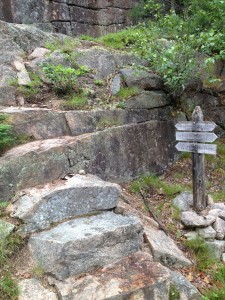
One of the trails leading from the carriage roads, which begin as steps cut into the granite hillsides.
After lunch, I hopped on a bike and rode 19 miles with Morgan on the carriage roads past Jordan Pond and its lovely historic “gate lodge” building, and then to Bubble Pond where we rejoined the paved Park Loop Road.
From Bubble Pond, we rode the 3-mile, 1200-foot climb to the summit of Cadillac Mountain, which overlooks the Maine coastline and all the dots of seemingly endless islands. (We missed getting a shot from the summit. The pic below is borrowed from this site.)
Both while running and riding, I felt in awe of the attention to detail and the level of craftsmanship that went into creating the park. We have one person in particular to thank for this, and that is John D. Rockefeller Jr.
A century ago, several of the prominent wealthy citizens who “summered” in Maine (turning summer into a verb) donated land to create and preserve Acadia National Park. But it was the junior Rockefeller who envisioned the carriage road network where he wanted to ride on motor-free byways. His father, the founder of Standard Oil, built similar carriage road networks on their estates in New York and Ohio.
From 1913 to 1940, Rockefeller Jr. oversaw the construction of this expertly engineered and landscaped system. The team of workers built culverts and ditches, and carefully laid layers of gravel, to ensure good drainage in the wet weather. Hence, no mud to bog down the carriage or bicycle wheels (or runner’s shoes).
Perhaps most incredible and pleasing to my eye are the miles and miles of granite blocks that line the roads. These are called “coping stones” and meant to serve as guard rails to define the roadways. They are intentionally irregular, varying in size from 2 to 3 feet tall and unevenly cut to create a rustic look, and they are nicknamed “Rockefeller’s Teeth.”
Rockefeller also financed the construction of 16 stone bridges. According to one article, “Over time, the stone cutters grew very skilled, and Rockefeller often requested them not to cut the facing too well lest the rustic look be lost.” This intentionally rustic aesthetic was part of a movement by “the Rusticators,” a term that described families who spent long summers on the coast of Maine. They built mansions and called them “cottages.” “Rusticators wanted to live simpler lives, though they enjoyed the amenities of a well-to-do American lifestyle and came from comfortable backgrounds,” according to another article on Maine’s history. (Sounds to me like 21st-century Marin.)
We visited in July, when everything is a dense green, but I have seen photos of the maples turning golden and red in the fall, so I imagine it’s even more beautiful then. In winter, the carriage roads open to cross-country skiers.
I feel so fortunate to have had the opportunity to explore these enchanting carriage roads, and visitors like me owe gratitude to the philanthropists who made them and continue to maintain them. In the 1990s, the roads and landscaping underwent extensive restoration through fundraising and volunteering of Friends of Acadia (their website is a great resource for info on visiting the park).

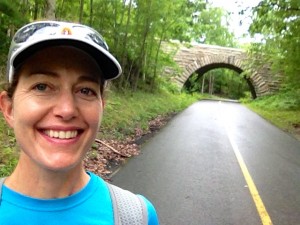
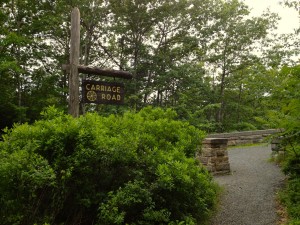
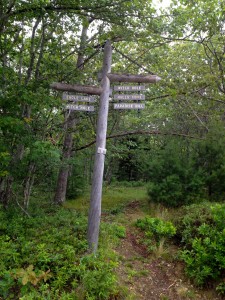
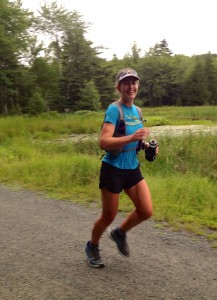
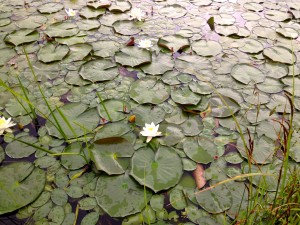
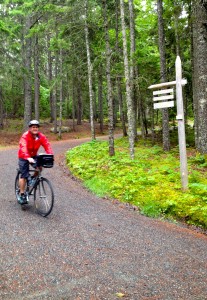
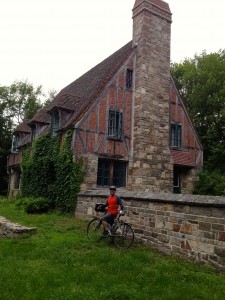
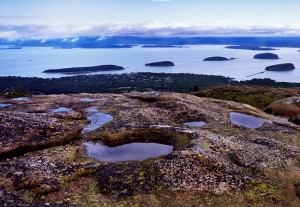
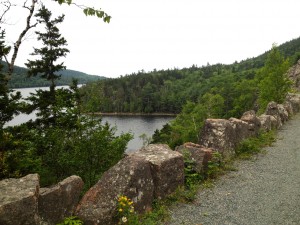
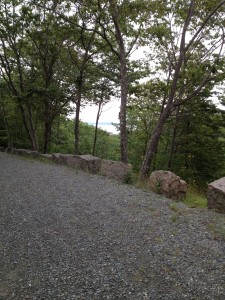
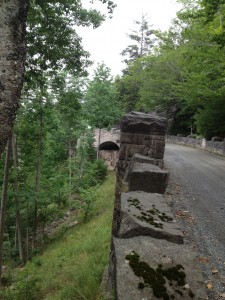
[…] Runner’s Trip reports on a few days running in one of our favorite places, Acadia National […]
[…] My last post details some of the history and trails of Acadia National Park on Mount Desert Island, which is about 3.5 hours north of Portland. Our group shuttled via two vans up there on Day 1, and after a lobster lunch at Northeast Harbor, we biked around the island to Bar Harbor. This was an easy, 17-mile “get to know your bike” introduction to the island, and pretty soon I felt comfortable peddling past woodsy driveways that led to tucked-away mansions while taking in views of Somes Sound as we curved around the northern part of the island. The weather was sunny and downright hot and humid, but the next day it became overcast with occasional showers, which was more comfortable for cycling and running. […]